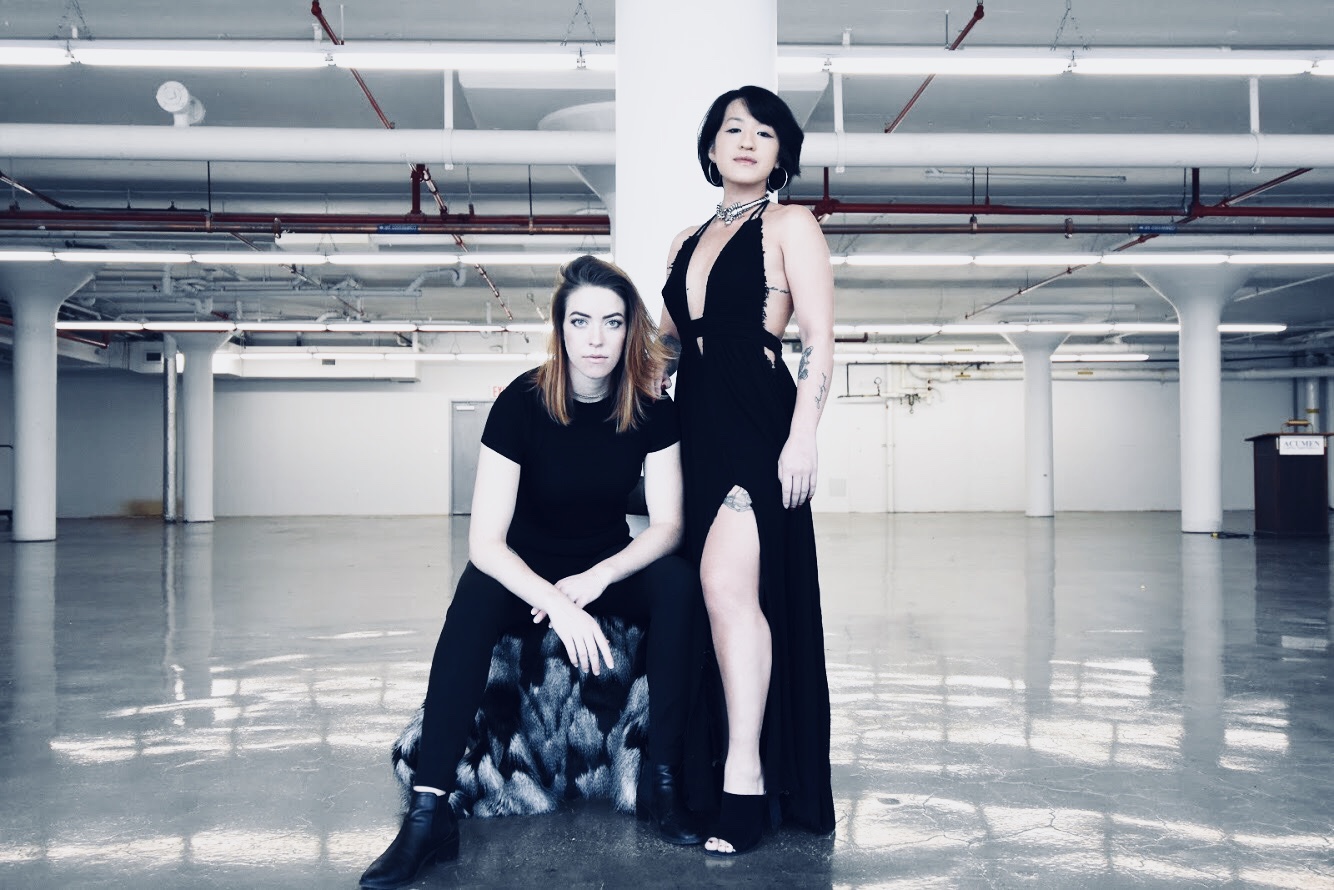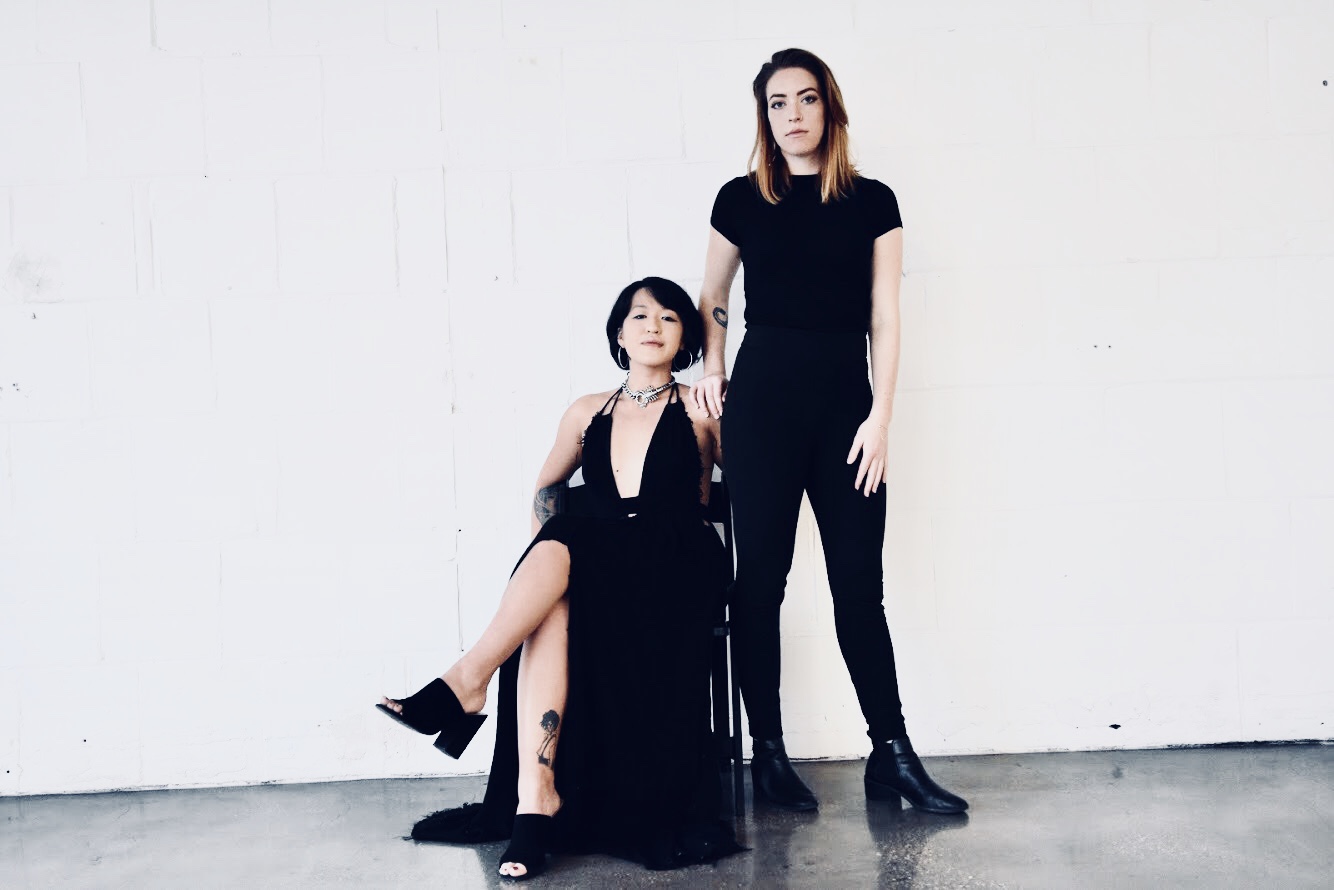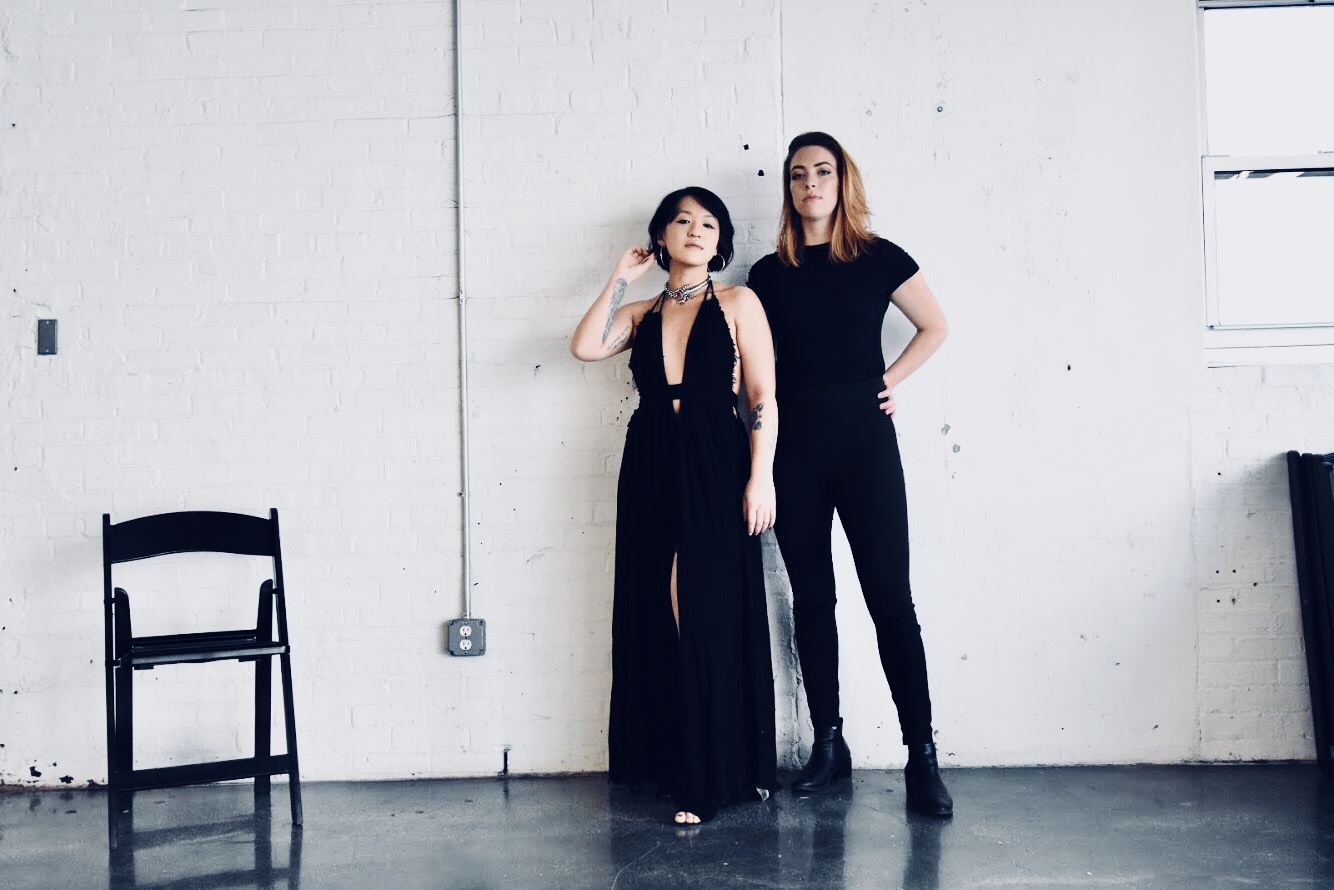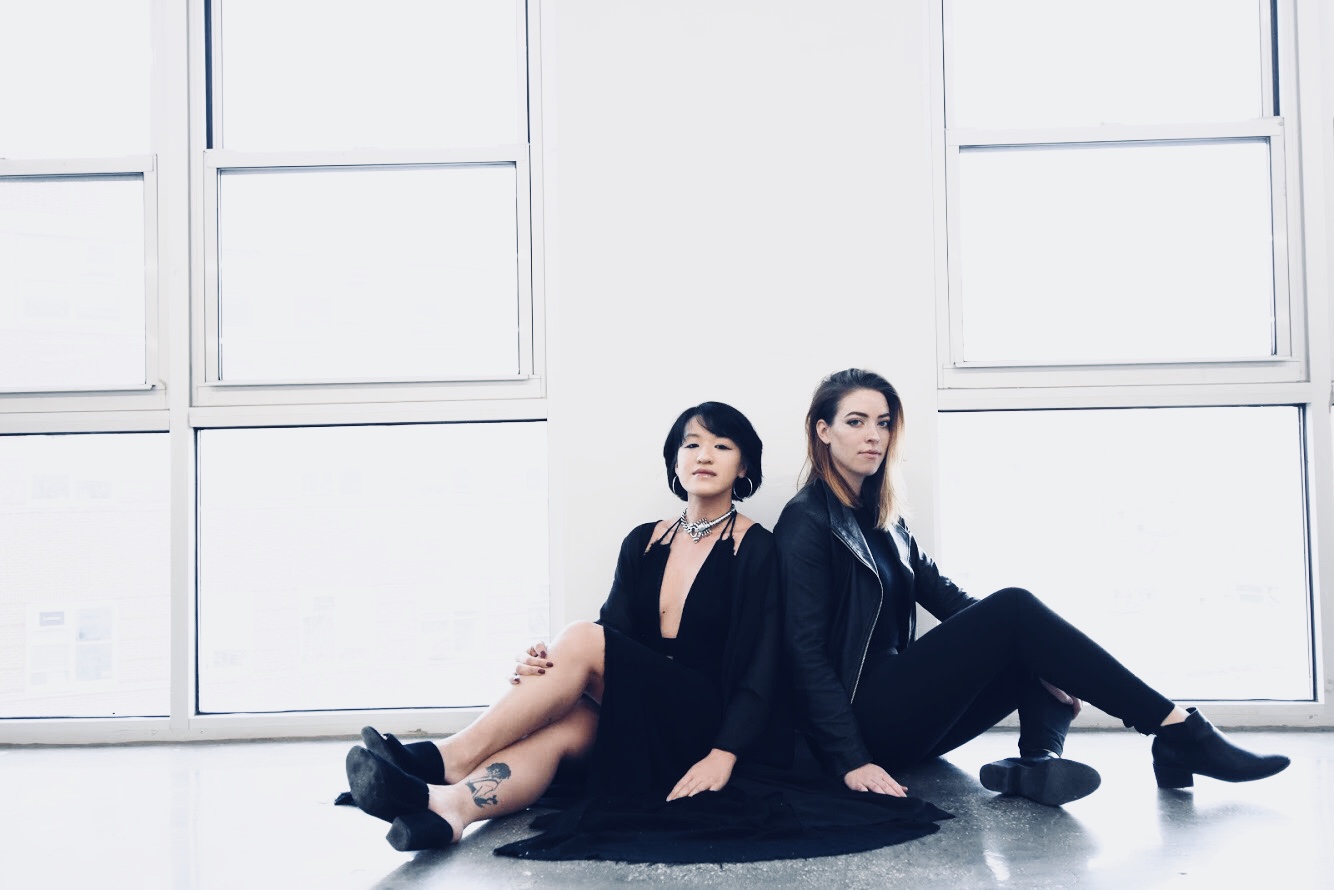The Art Vacancy, An NYC Art Organization That Supports Emerging Artists

MEET Sáng Huynh and Lindsey Puccio, the founders of The Art Vacancy, a New York-based organization that combats the elitism of the art industry by producing exhibitions in vacant spaces and supporting artists across all disciplines. With previous group shows like ‘Measures’ and ‘Passion vs. Pragmatism,’ Huynh and Puccio continue to create more opportunities for emerging artists by providing them with the resources they need to take the next step in their career, rather than be vetted by institutionalized limitations shaped by a dominant culture. “We do our best to provide resources for artists and to give them a platform,” says Huynh. “Not just a physical space but also through our website and social media. We help pivot them into the next step in their career as an artist.”
This Women’s History Month, the Art Vacancy partners with Chashama at their art space in Bowery where they will hold their upcoming group exhibition called ORIGINS: What it means to be a woman, from March 15th-30th.

How did The Art Vacancy get started?
SH: I started this one show called “Practice vs. Pragmatism” and I invited my friends who I knew were either artists or advocates for the arts. Lindsey was one of them, so we chatted and decided we could branch out and make it more than just one show. One of the biggest things for me is I’m intrigued by curators who produce shows in unorthodox spaces and just not being confined to a commercial gallery.
LP: As far as the team—the team is made up of a lot people who love being around each other but also have this passion for the arts—so all of us are a community of artists, for artists, by artists.

What has the journey been like so far?
SH: It’s been quite a wild ride I would say. It’s been a significant learning experience because I’ve never had a business before; I’ve never had my own art organization—learning how to delegate efficiently, effectively, and working with a team takes a lot of effort and patience.
LP: Every single year we also do an annual fundraising party because all of our funding is basically grassroots from our community as artists. Our fundraising party funds what we’re going to be doing for the next year, so it’s really imperative to have that support at that time. Our most recent event that was the brand relaunch party. We had started The Art Vacancy and was really getting into it, but then we realized: “What is our mission? What do we want to be telling the community? Who are we?” We had an amazing team, Taylor and Angus, who professionally branded us pro bono and then had an event around that.
What does art mean to you?
SH: I would say art is very intimate, it’s subjective, and I feel that it’s never just confined to the person who created it. I think it’s so integral to our profess to society and individuals. I guess art just enables us to do that, to move forward with innovation and creativity. It’s so many things warped into one.
LP: Art to me is expression. It is a conversation almost, between the person creating their self-expression and how somebody responds to it; so it is to me a very open conversation; you can learn a lot from somebody else just from looking at their art but you can also self reflect on yourself from that same piece.

What inspires you when curating your art shows?
LP: I am not the curator but when we do a call for artists and we submit, I’m the person who’s always practical: “Where are they located, how accessible is it, what are they trying to say? Is it sellable?” And that’s not always a determining factor—but I’m usually the person who thinks about all the practical aspects whereas the quality and taste is what Sáng contributes to the curation.
SH: I’m more the idealist. I thrive off of ideas and fun concepts. What inspires me? I was almost a psych major in college—human communication and psyche is what inspires me. It’s what’s I look for when I go to shows, looking for something that affects people. In terms of aesthetics, I like to curate shows that have that cohesive flow, but it’s also the message behind the work and the message within the artist. A lot of the people that have applied in our earlier shows found out about us through word of mouth and social media.
If you both could own any artwork in the world what would it be?
SH: This is very vague, but I have a lot of friends who are artists who are getting their MFA and are phenomenal—I would just want to own and be one of the first collectors of their works! And that includes my good friend Jamaal Peterman, he’s amazing.
LP: In high school I had Andy Warhol’s “Bananas” as my screensaver and I was constantly playing on this Jackson Pollock website—I don’t know if you’ve ever played with it—you just drag your mouse and click to change colors and you could make a digital Pollock…[laughs] and that’s how I spent my high school. But having something that is so nostalgic to my beginning of love for art would be amazing.
Who are your current favorite female artists?
LP: One of my favorite artists is Shei Phan because how expressive she is with every single aspect of who she is. She was in America’s Next Top Model, but artist, designer, sculptor, and also a friend of ours. I just love her expression of work…and honestly, I love all the women that we’ve worked with in our shows. Catarina Mantero is amazing, John Yuyi is amazing.
SH: LuLu Meng is from our group exhibition “Measures.” She was the one that did that massive installation with the pins of the faces. Her stories are so intriguing to me. Her background is in science, biochemistry—she shifted her career into art and explained how it’s interconnected in her mind. She’s fascinating and she’s so humble. Also this other artist named Naomi Okubu—she does paintings and drawings and they’re just so intricate; full of color and vibrancy.

As an artist, what are the perks of working with The Art Vacancy?
LP: One of the perks of our exhibitions is that we interview all of the artists and try to build a personal relationship with them as well because we want to be an advocate for them and understand who they are. We actually get to know who the artists are and be companions with them throughout the process, grow friendships, and create relationships with them.
SH: It’s important to us because this is not just a business transaction—we want to work with artists beyond just this one show. It’s important to know the person you’re working with and curating with.
What is the “elite niche” that you’ve noticed between curators and artists in the business that provoked The Art Vacancy’s concept?
LP: Sometimes when you’re an artist, one of the things you are expected to do is devote yourself to art, but not everybody has the resources to drop a job. We do believe that you can have the 9 to 5 and still be an artist. A lot of the elitism is that you have to be a full time artist and you can’t be anything else. Another thing is the level that it takes for artists make connections—it’s really hard to enter the field if you don’t know somebody. So we want to be building relationships with other artists, and collectors, and gallerists. That way we can be the connecting loop between the elitism of the larger galleries and emerging artists.
SH: When I think about elitism in the arts, it’s very limiting to those people who don’t have those resources or who don’t have the money to pay tuition for a great MFA program. When artists apply to participate in our exhibitions we don’t require an application fee. We don’t expect them to pay for the space. We want to work towards supporting the community that fuels that. The Art Vacancy expels the idea that either you need to come from money to support yourself so you can be this artist full time, or you need to be you and have that notoriety for us to represent you. Even working at a gallery, you have to have a masters in art history—it’s a bit ridiculous what they expect you to have just to work as a sales associate.
LP: To go back to what I was saying earlier, art is a conversation—you don’t have to have a PhD to be able to communicate. You can communicate from any walk of life. There are great artists who go to Pratt or the Art Institute of New York, but not everyone has the resources to do that. And sometimes artists who don’t have the resources have the best stories to share.
In what way does The Art Vacancy combat the elitism?
SH: I think a big thing is how we run and how we work with these artists. I always stress to our team that we want to be the best advocates for them beyond just the means of curating a show for them. And it’s just the values that we have in communicating that—beyond the people we work with, but also within our shows and the way we talk about The Art Vacancy and the art world. It started within our community and that’s how it propelled.

What do you see yourselves doing in 2019?
SH: We have a lot of things in the works. We are going to have one space we can use for an entire month and have rotating shows.
LP: We have planned the one month long space by Bowery that we got through an amazing opportunity with Chashama. If you’re not familiar with them you should definitely look them up. It’s owned by Anita Dirst who is part of the Dorst family who owns a lot of real estate in the city and therefore provides real estate locations for artists to show. Similar mission on a very very large scale but more so related to space. Our annual fundraising party in June is happening and our annual group exhibition in September is happening. And we already know the theme for that—Sáng can tell you.
SH: It’s called “Conceal, Reveal.” It’s a surrealistic take on just society. And that’s very vague, and I’m not going to go into it much more because it’s going to be amazing. There’s so much to talk about, especially in this climate.
What has been the proudest moment of The Art Vacancy?
LP: Sáng cries at every event. [Laughs]
SH: I don’t think I cried at the brand launch though! Maybe I did. I might have teared up. I’ve had a lot of proud moments but I think the biggest is getting the feedback from the artist who says, “You gave me the confidence to show my work.” That was from one of the first artists we worked with, Ilya Chaynikov. Knowing that we’ve had such a significant impact on these artists lives means so much and I’m so proud of it. That’s exactly what we want to do and eventually on a grander scale.
LP: After every single event it’s just like, wow we did it and we can do it.
What piece of advice can you give to other “artrepreneurs” out there trying to make a difference within the art community?
LP: Do it and don’t sleep—kidding. But just do it even if you fail. You can go forward and fail and still be moving forward.
SH: What Lindsey said. Any success story that I know—they’ve failed a million times. But the fact that they kept going pushed them further to their goals. I think it’s important to check with yourself and keep setting goals. You should never feel stagnant if you want to make it work. To add to that, never feel ashamed to ask for help. Closed mouths don’t get fed. I’m a firm believer that if I want something, I will ask for it—and if they say no, whatever—I’ll ask the next person.
The Art Vacancy is based in New York City. Visit their website to see their upcoming exhibitions: www.theartvacancy.com.


